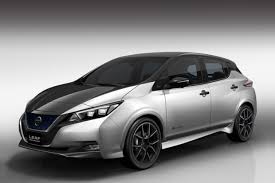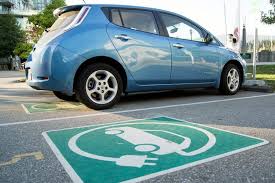Used batteries from electric vehicles can disrupt the energy sector and create value for energy storage
 The battery does not expire after it has already exhausted its initial use in an electric vehicle. Batteries have great potential for reuse in stationary energy storage systems. In addition, by reducing the cost of energy storage, they can help to integrate more renewable energy sources into the network.
The battery does not expire after it has already exhausted its initial use in an electric vehicle. Batteries have great potential for reuse in stationary energy storage systems. In addition, by reducing the cost of energy storage, they can help to integrate more renewable energy sources into the network.
Lithium-ion batteries used in electric vehicles, which are usually designed for a decade (8 years or mileage up to 160,000 km). But even after 10 years of operation in electric vehicles, batteries can be reused in markets that require stationary energy storage with 100-300 cycles per year. Alternative re-use is mass utilization, which is possible in most of the regions in accordance with the rules of occupational health and safety, or disposal, which may make sense for battery manufacturers who want to get valuable metals, such as cobalt and Nickel, and which can achieve competitive costs for processing.With the continued global expansion of electric vehicles, there is a new opportunity for the energy sector: an energy storage system based on used batteries with a capacity of more than 200 gigawatt-hours by 2030.
Four steps for the revival of used batteries of electric vehicles
The rapid growth in the number of electric vehicles can provide the market with a backup energy storage system, exceeding the cost of $30 billion by 2030, as used batteries will be suitable for use in other areas. However, in order to be able to reuse used batteries, it is necessary to overcome a number of problems that require targeted action on the part of suppliers, end users and industry regulators.
1. Existing batteries vary in size, chemical composition of the electrodes and format. Their variations will only increase: by 2025, up to 250 new models of electric vehicles with batteries from more than 15 manufacturers will be released. Each battery is designed for specific models of electric vehicles, which complicates repair due to lack of standardization. To overcome this problem, automakers can design their electric vehicles with regard to the secondary use of their batteries. For example, Nissan has formalized a partnership with Sumitomo Corporation to reuse Nissan Leaf batteries for stationary energy storage systems.
2. As new batteries become cheaper, the difference in cost between used and new batteries is estimated to decrease by about 30 to 70%. The cost of used battery may drop to about 25% by 2040.
To maintain the cost gap between new and used batteries, used batteries can be used by companies in the industry with the ability to scale their recovery processes to reduce costs and maintain competitiveness.
3. Stricter standards should be set for the quality, safety and performance of the battery. A variety of agencies, alliances, including OEMs and companies that manufacture batteries with the possibility of their secondary use, should begin work on the creation of standards that classify the performance potential of batteries for different ways of energy storage. This will create transparency in product supply and market demand. The establishment of a body to regularly review and improve battery standards and to report annually on performance and average costs can further stimulate growth in this market.
4. There are currently no regulations determining whether recycling or reuse is an appropriate option for electric vehicle batteries. This leads to regional differences in battery recycling and reuse, which ultimately leads to uncertainty for equipment manufacturers, companies producing new generation batteries, and potential customers regarding liability for the end-of-life product. Stakeholders can determine in advance whether to recycle or reuse batteries.
For example, Renault participates in battery recycling and reuse programs with industry partners, following a structured process for determining the end-of-life path. This process allows you to determine whether there will be a demand for refurbished batteries or not.
The need to recycle millions of electric vehicles in the future has already led to the emergence of recycling and reuse industries. These new industries align profits along with efficient use of resources and allow the integration of renewable energy into networks. While many of the above targeted actions are already being taken by industry players, even more promising corporations and regulators can take the lead to reap the benefits that used batteries can bring.




